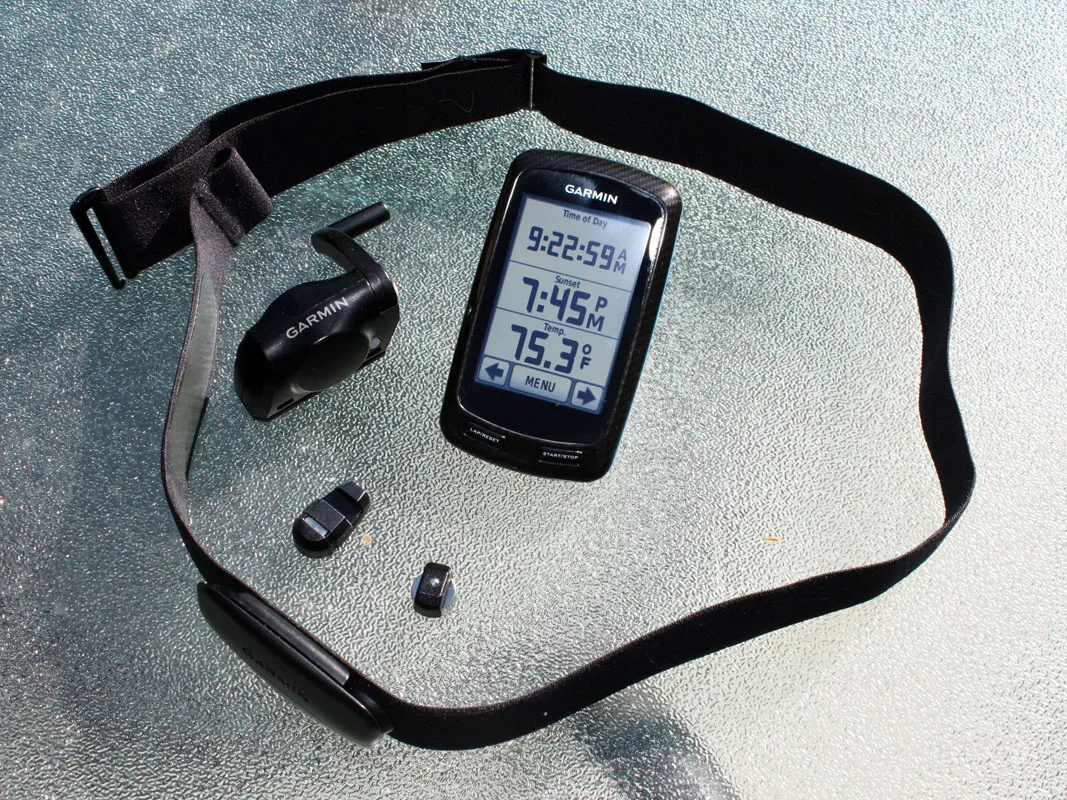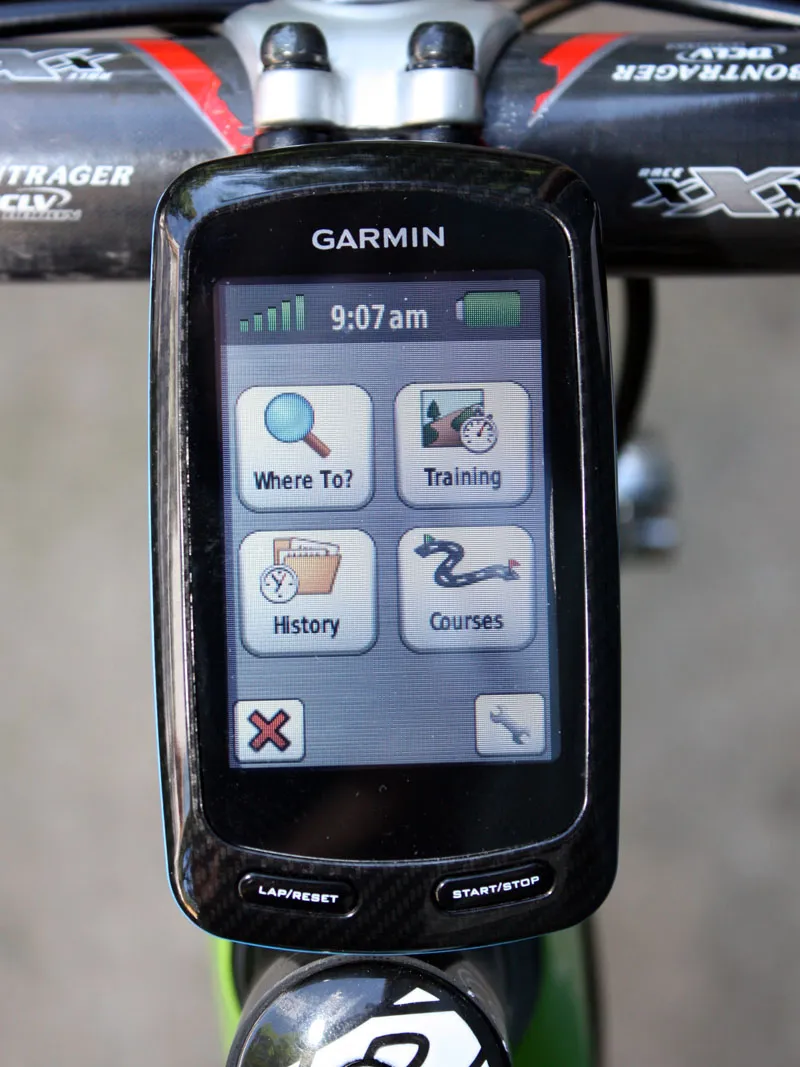Garmin's Edge 800 still sits at the top of the GPS cycle computer heap but given the pace at which technology is progressing, we wouldn't bet against its successor, the Edge 900, to be launched later this year. Whether it's called the Garmin Edge 900 or the Edge 800S or the 800 EVO remains to be seen.
Regardless of the name, here are the upgrades we'd most like to see.
1. A better screen
The Garmin Edge 800's screen is good but not fantastic. The touchscreen works admirably well, even with full-fingered gloves, but the plastic construction is prone to scratching (particularly with those same gloves) and the resolution and contrast aren't up to snuff with Garmin's monochrome Edge 500. The display is legible but the pixels aren't as crisp as we'd like, there aren't as many of them as we'd like, and the colors aren't terribly vivid.
Apple's iPhone 4S has demonstrated what can be done with a color touchscreen and it'd be nice if the Edge 900 adopted something similar while still retaining the glove-friendly operation. Hold up an Edge 800 next to a cycling-app-equipped iPhone and there's simply no comparison.
Another handy addition would be the option for either portrait or landscape orientations. The Edge 800's portrait layout works just fine in most cases but there are a few instances when landscape would provide a better view of things. The existing quarter-turn mount could easily accommodate this.
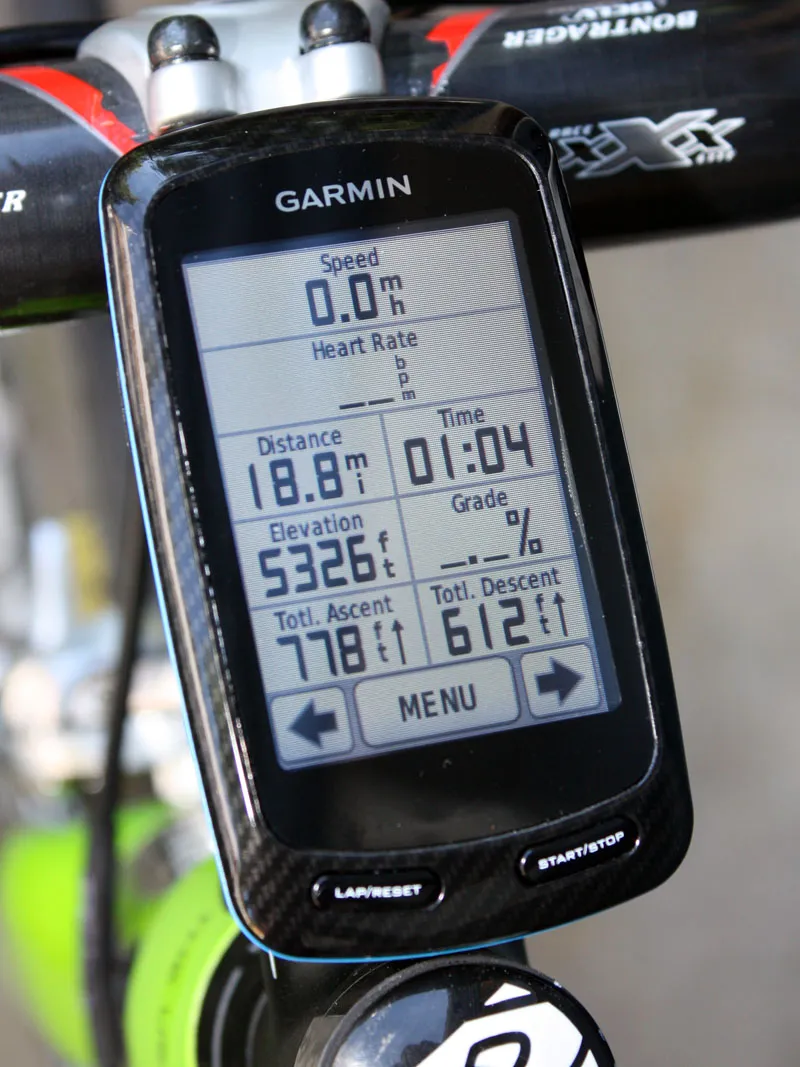
Garmin gave the Edge 800 a monstrous touchscreen that works well with full-fingered gloves but the resolution, contrast and color saturation aren't as good as we'd like
2. Built-in wireless connectivity
Connecting the Edge 800 to your computer for downloading ride data and uploading courses is simple enough – plus there's the added bonus that it gets recharged at the same time. However, you don't always need to charge the Edge 800 after each ride and the growing popularity of tablet computers makes the cord more of an issue since most of them (including the upcoming iPad 3, at least according to rumors) aren't natively equipped with USB ports.
Onboard wireless connectivity would quickly remedy that situation. Conventional WiFi would seem the obvious choice, as it's already proven reasonably effective even in devices as small as Secure Digital (SD) memory cards. But the newly announced Bluetooth Low Energy (BLE, also referred to as Bluetooth Smart) protocol seems more likely.
Why BLE? For one, ANT may be ubiquitous in wireless devices for the sporting world but it still can't communicate with most mobile phones, laptop computers or tablets. Such connectivity could theoretically open up enormous areas of software development for when you're on the go but in range of some sort of broadband network. More importantly, consider the huge market growth potential when taking into account the millions of mobile phones that could potentially act as 'hubs' to BLE-compatible devices – one can only imagine the sort of apps creative programmers could come up with.
Second, ANT may be a readily available standard but it's owned by Garmin, who purchased Dynastream back in 2006. Garmin corporate representatives adamantly insist that members of the ANT Alliance are protected by hardwired rules that prohibit the crossover of competitive proprietary information to Garmin's consumer electronics division but nevertheless, prospective members can hardly be blamed for being a little suspicious occasionally.
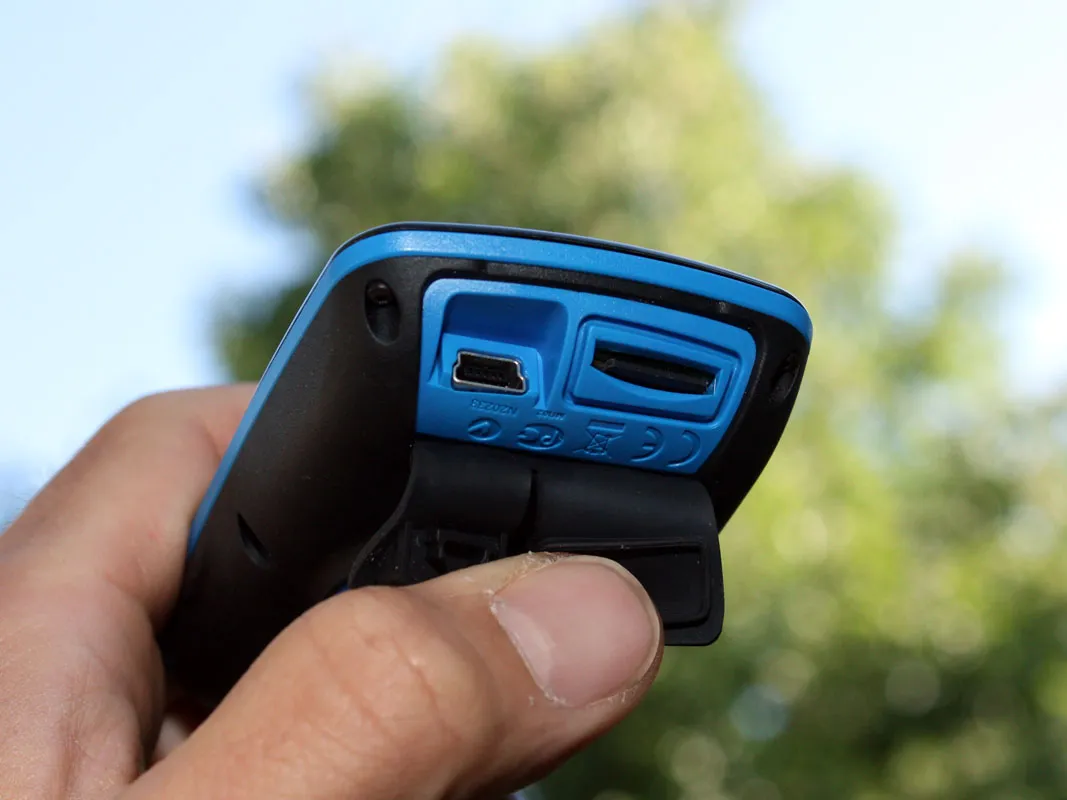
Garmin Edge 800 users have to use a mini-USB port to either charge the device or transfer data. Integrating some sort of wireless communication such as Bluetooth Low Energy (also known as Bluetooth Smart) could eliminate that need
On the other hand, BLE is a true open standard and has already been embraced by Look for eventual use in their new KéO Power pedals and CycleOps for a new range of computers – even Microsoft are reportedly on board. Texas Instruments have developed a new chip that works with both BLE and ANT , making dual-mode devices not only a genuine possibility but also an appealing option.
Before you get excited about the prospect of connecting your new Garmin Edge device to your phone, though, be aware that most current Bluetooth-enabled devices won't be compatible. Newer models such as the Apple iPhone 4S and latest MacBook Air, Motorola Droid RAZR phone and MOTOACTV watch, and Casio G-Shock GB-6900 will work but nearly everything else operates on an older Bluetooth v2.1 standard that can't easily be upgraded. The future may be coming but it's not here just yet.
3. Two-way emergency communication
Given its compatibility with topographical maps, the Garmin Edge 800 is a natural choice for exploring the backcountry on your bike, in particular new trails or open areas that don't currently have legal trail networks – but could. Unfortunately, such exploration can also put you out of touch in case of emergency and the Edge 800 can't help you.
We'd like to see some sort of emergency two-way communication a la Spot. Not only would that make the next-generation Edge more versatile and add some serious safety credentials, it'd improve its already-significant appeal to the out-of-bounds crowd. In theory, such an Edge computer would not only be able to inform your loved ones that you're alive and well but also where you are, similar to what Garmin already offer with the GTU 10 tracker.
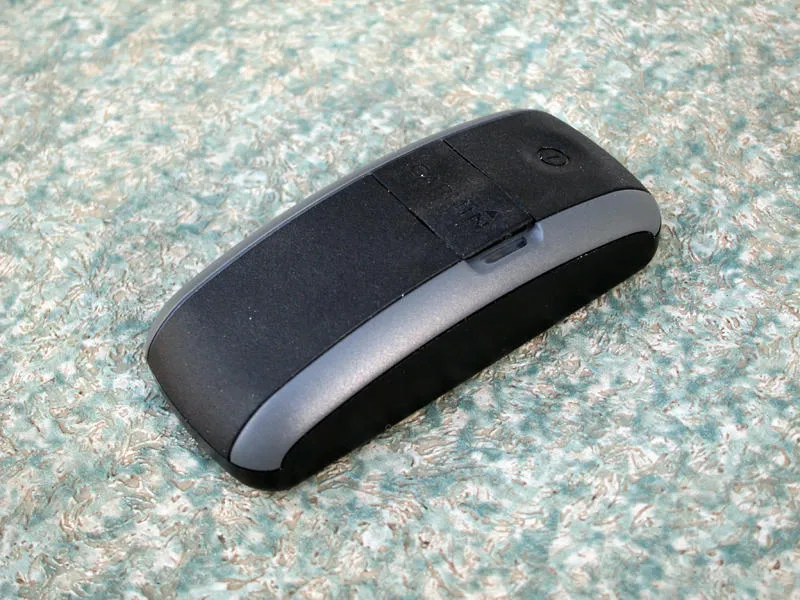
We'd like to see some sort of emergency two-way communication on the Edge 900, similar to what Garmin already offer with the GTU 10 tracker
4. Refine the physical dimensions
Naturally, we'd love for all of the above features to be incorporated into a package that's both lighter and smaller than it is now. Though the Edge 800 is hardly a brick, there's still the potential to shrink the bezel around the current screen size – or conversely, push the edges of the screen outward to fill the current case.
Likewise, the Edge 800 isn't terribly heavy as it is and it's heaps lighter than any of the iPhone-based bike computers on the market. But if no one cared about size and weight, Garmin wouldn't have needed to introduce the Edge 500. Regardless of whether you care about weight, there are others that do – and they're often willing to pay to keep it at a minimum.
Even if the size and weight don't change, we hope for a revised mount location. Centering the quarter-turn tabs on the back of the case makes a lot of sense from a design standpoint but it isn't always the best thing for modern bikes' increasingly shorter stems. Moving those tabs rearward on the back of the case would still let riders keep the Edge 900 center-mounted on the stem but the computer would be slightly cantilevered over the faceplate where it's somewhat protected instead of being precariously exposed on the handlebar.
5. Longer battery life
GPS devices are notorious power hogs and while the Edge 800 offers an impressive 15 hours of run time, that still doesn't suffice for multi-day adventures in the backcountry or even a single 24-hour solo endurance race. Rechargeable lithium-ion batteries have increased their power densities since the Edge 800 was developed so we're hoping for at least a few more hours of use from the next generation device. Couple a longer run time with the aforementioned wireless connectivity and that's one fewer cable lying around to clutter our desks.

The Garmin Edge 800 (right) is by no means heavy but we still hope for its successor to be smaller and lighter without sacrificing display size
6. Better desktop software
Garmin's own GarminConnect desktop software isn't bad at all. The basic functions are easy enough to use and there are enough ride analytics on tap to satisfy most tech geeks. However, the proliferation of third-party software suites has highlighted several chinks in GarminConnect's armor.
In particular, Strava has exploded as an online resource not just for logging your GPS data but also sharing that information with others and instantly comparing ride and segment times for a sort of web-based pseudo-race. It's simple and intuitive to use, there's an associated mobile app, and it also uploads data from your device heaps quicker than GarminConnect. Think of it just like your modestly competitive group ride, only now you're racing everyone – pro riders included.
Strava's appeal falls short in the ability to create and upload courses, though – something that GarminConnect includes, as do others such as Bikely. However, in none of those cases is the process as seamless as it should be, and in many cases the Edge 800 still won't generate turn-by-turn directions, even for courses created on Garmin's own site. The obvious solution would be to integrate all of that functionality into GarminConnect but refined in such a way so as to be elegant and highly intuitive – like, for example, the ability to drag-and-drop courses on to an icon of your connected GPS computer.
A company the size of Garmin could simply buy their software competitors but we're unsure how likely that would be. Ultimately, the existence of third-party GPS-based sites still promotes the purchase of the company's devices so it's hardly a losing situation. GarminConnect is fine as it is but it certainly could be much better.
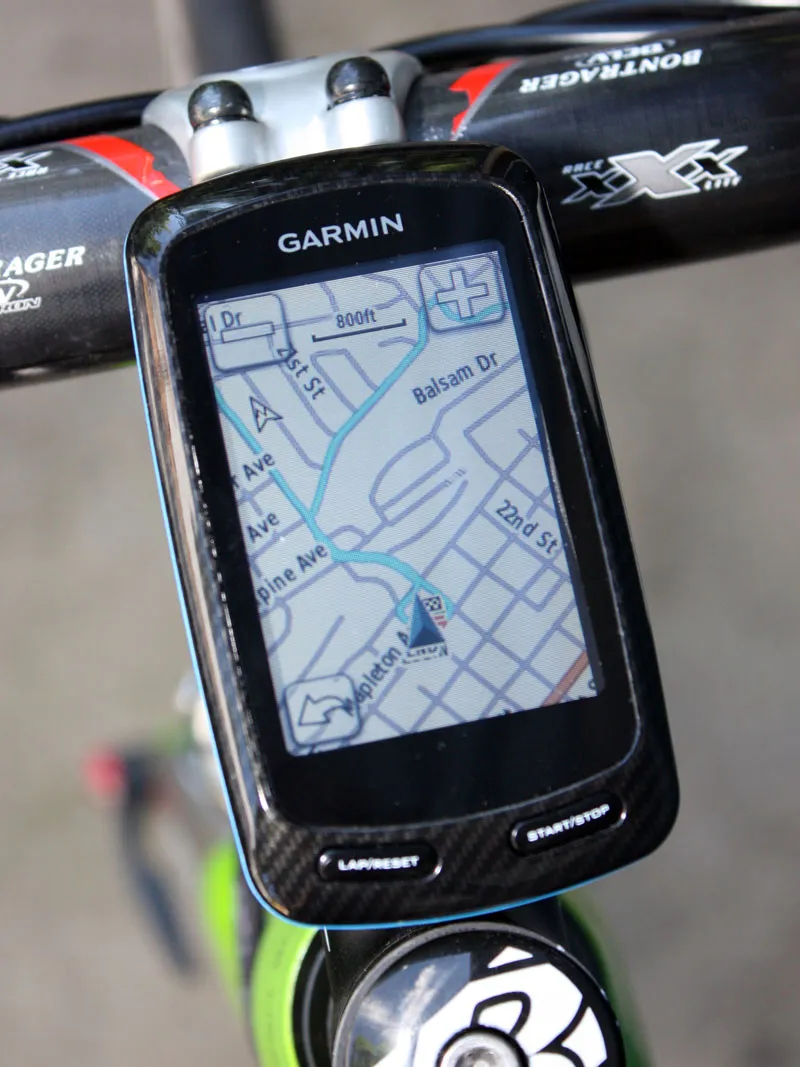
The Garmin Edge 800 offers full-fledged turn-by-turn navigation abilities when you choose a destination on the device itself. When uploading courses from your desktop, though, the results aren't quite as consistent

